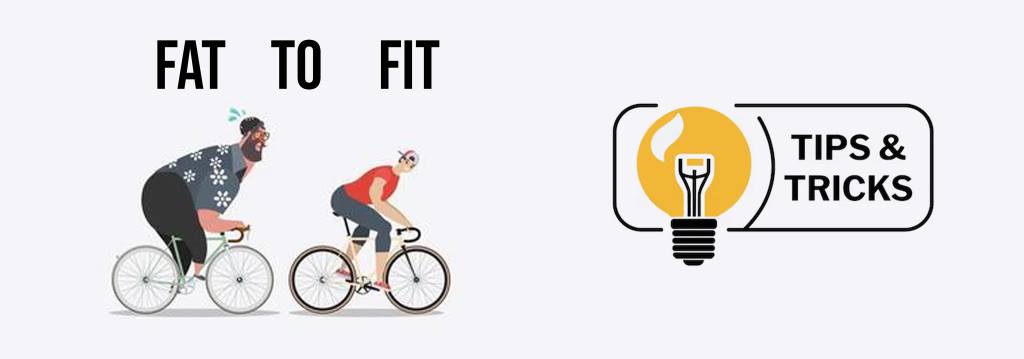Belly fat is a common concern for many people, and finding effective ways to reduce it can be challenging. Cycling, a popular form of cardio exercise, is often touted as a solution. But does cycling really burn belly fat? In this comprehensive guide, we’ll explore the science behind cycling and fat loss, provide actionable tips, and help you understand how to maximize your results. Whether you’re a beginner or an experienced cyclist, this post will equip you with the knowledge to achieve your fitness goals.
How Cycling Helps Burn Belly Fat
The Science Behind Fat Loss
Fat loss occurs when you burn more calories than you consume. Cycling is an excellent way to create this calorie deficit. According to a 2023 study by the American Council on Exercise (ACE), cycling at a moderate pace can burn between 400–600 calories per hour, depending on intensity and body weight.
When you cycle, your body taps into stored fat for energy, including visceral fat—the type of fat that accumulates around your belly. A 2021 study published in the Journal of Sports Medicine found that regular aerobic exercise, like cycling, significantly reduces visceral fat over time.
Cycling vs. Other Forms of Exercise
Compared to running or weightlifting, cycling is a low-impact exercise that’s easier on the joints. This makes it accessible for people of all fitness levels. Additionally, cycling engages your core muscles, helping to tone your midsection while burning fat.

How to Maximize Belly Fat Loss Through Cycling
1. Incorporate High-Intensity Interval Training (HIIT)
HIIT involves alternating between short bursts of intense effort and periods of rest. A 2022 study by the International Journal of Obesity found that HIIT cycling burns more calories in less time compared to steady-state cardio. For example, try cycling at maximum effort for 30 seconds, followed by 1–2 minutes of slow pedaling. Repeat for 20–30 minutes.
2. Increase Your Cycling Duration and Frequency
Consistency is key for fat loss. Aim to cycle at least 3–5 times per week for 45–60 minutes per session. According to the Centers for Disease Control and Prevention (CDC), adults should aim for 150 minutes of moderate-intensity aerobic activity weekly for overall health.
3. Combine Cycling with Strength Training
While cycling burns calories, strength training builds muscle, which boosts your metabolism. Incorporate exercises like squats, lunges, and planks into your routine to target your core and enhance fat loss.
The Role of Diet in Burning Belly Fat
Why Nutrition Matters
Exercise alone isn’t enough to burn belly fat. A balanced diet is crucial for creating a calorie deficit. Focus on whole, nutrient-dense foods like lean proteins, vegetables, whole grains, and healthy fats. Avoid sugary drinks and processed foods, which contribute to fat storage.
Foods That Support Fat Loss
- Protein: Helps build muscle and keeps you full longer. Include sources like chicken, fish, beans, and tofu.
- Fiber: Aids digestion and reduces cravings. Opt for fruits, vegetables, and whole grains.
- Healthy Fats: Promote satiety and support metabolism. Examples include avocados, nuts, and olive oil.
Common Myths About Cycling and Belly Fat
Myth 1: Spot Reduction is Possible
Many people believe they can target belly fat specifically through exercise. However, fat loss occurs throughout the body, not just in one area. Cycling helps reduce overall body fat, including belly fat, but it won’t exclusively target your midsection.
Myth 2: Cycling Alone is Enough
While cycling is effective, combining it with a healthy diet and strength training yields the best results. A holistic approach ensures long-term success.
Real-Life Success Stories
Case Study: Sarah’s Journey
Sarah, a 35-year-old mother of two, lost 20 pounds in six months by cycling five times a week and adopting a balanced diet. She credits cycling for not only burning belly fat but also improving her mental health and energy levels.
Case Study: John’s Transformation
John, a 45-year-old office worker, incorporated HIIT cycling into his routine and lost 15 pounds in three months. He also noticed a significant reduction in his waistline and improved cardiovascular health.
Tips for Staying Motivated
Set Realistic Goals
Start with small, achievable goals, like cycling for 20 minutes three times a week. Gradually increase your intensity and duration as your fitness improves.
Track Your Progress
Use a fitness tracker or app to monitor your cycling distance, speed, and calories burned. Seeing your progress can boost motivation and keep you on track.
Join a Cycling Community
Cycling with others can make the experience more enjoyable and hold you accountable. Look for local cycling groups or online communities to connect with like-minded individuals.
Conclusion
Cycling is an effective way to burn belly fat when combined with a healthy diet and consistent effort. By incorporating HIIT, increasing your cycling frequency, and focusing on nutrition, you can achieve your fat loss goals. Remember, consistency and patience are key. Start your cycling journey today and experience the transformative benefits for yourself! Did you find this guide helpful? Share your thoughts in the comments below or share this post with friends who might benefit.

